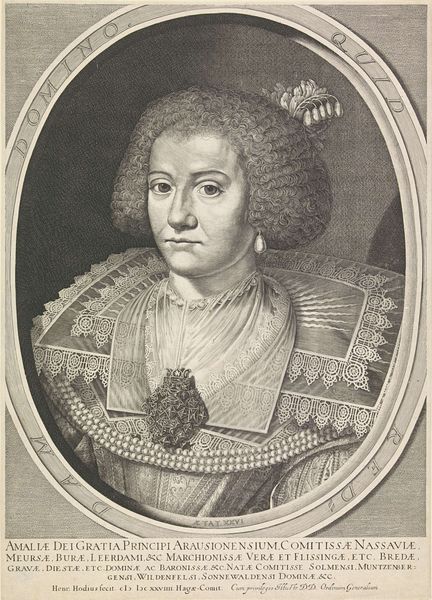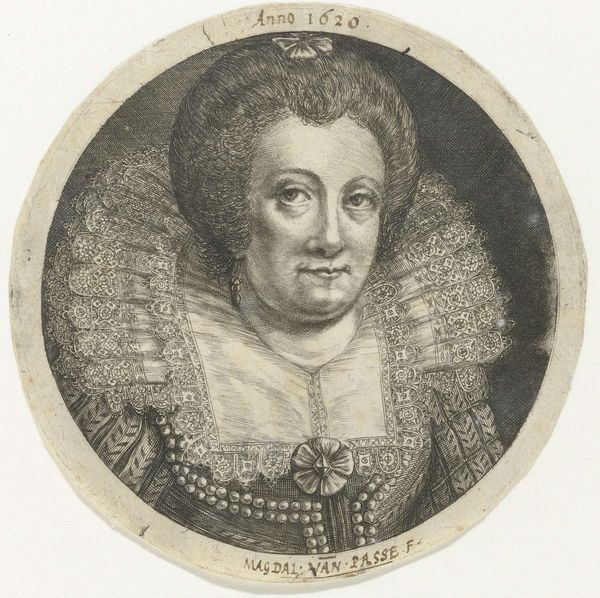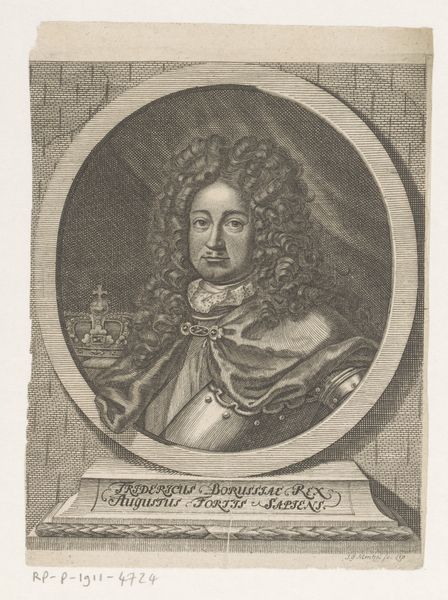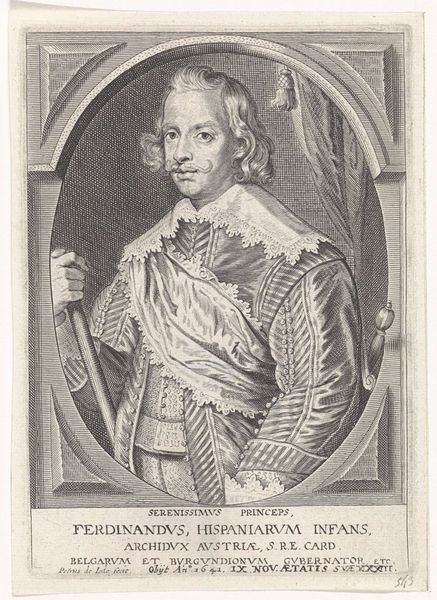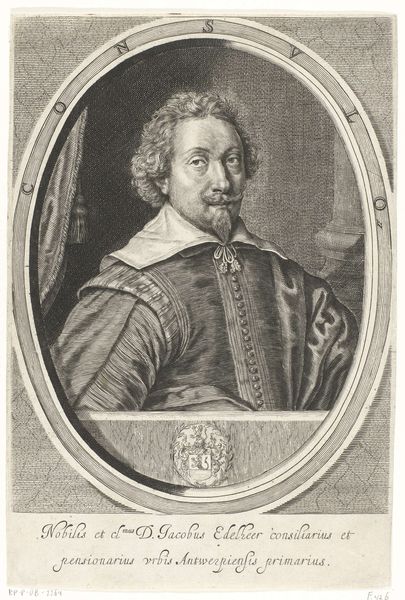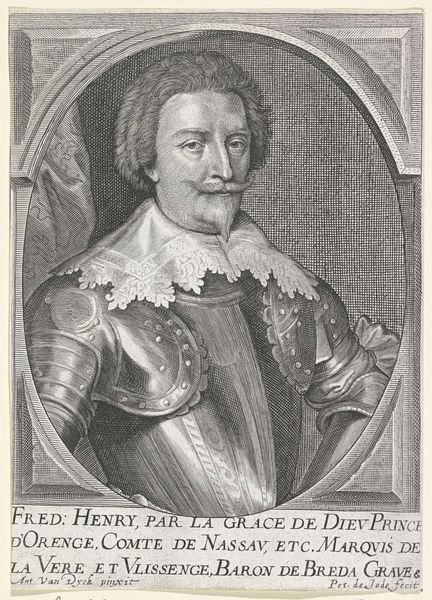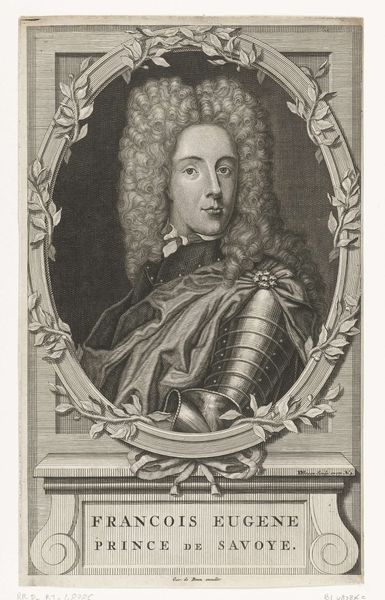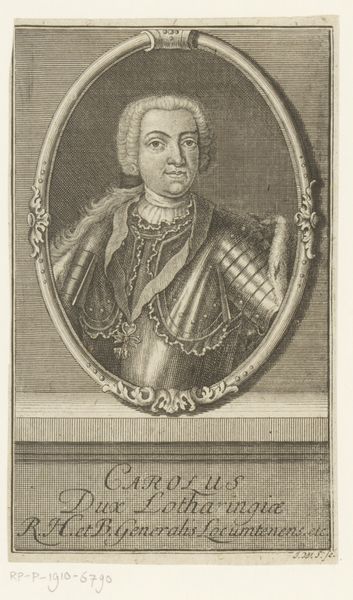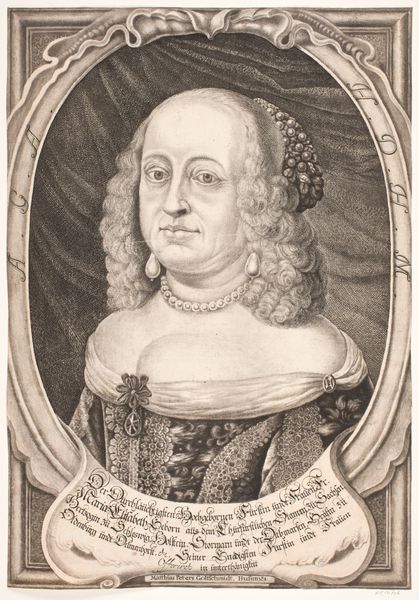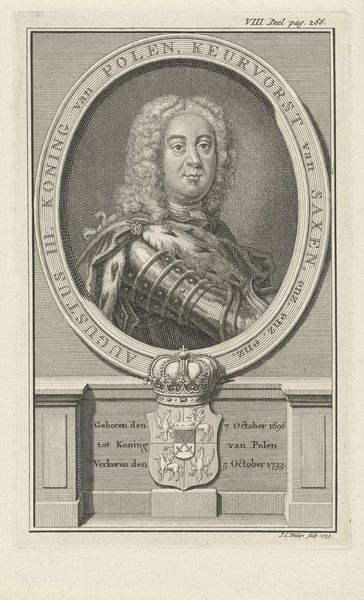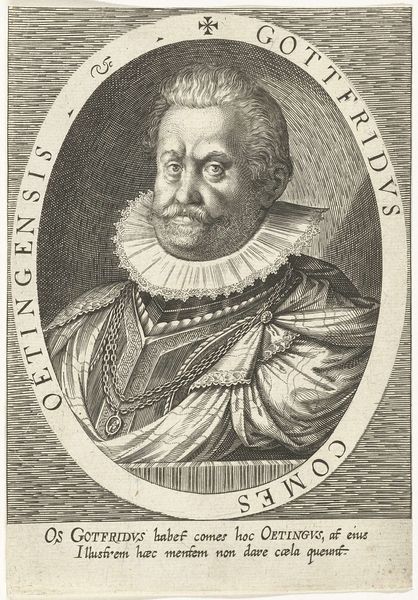
engraving
#
baroque
#
old engraving style
#
caricature
#
mannerism
#
line
#
history-painting
#
engraving
Dimensions: height 411 mm, width 302 mm
Copyright: Rijks Museum: Open Domain
Editor: Here we have Hendrick Hondius I’s “Portret van Maria de' Medici, koningin van Frankrijk,” created in 1628. It's an engraving, so primarily line-based. What strikes me is how meticulously the ruff and jewelry are rendered. What stands out to you in this piece? Curator: The labor involved in producing an engraving like this, especially at a time when printmaking was becoming a significant form of visual communication, is quite compelling. Consider the socio-economic context: who was consuming these images, and how did the availability of printed portraits shift power dynamics? Were they luxury goods, or a nascent form of mass media? Editor: That's a fascinating perspective! I hadn't really considered the engraving as a commodity itself. So, are you suggesting that the portrait’s value lies not just in depicting the Queen, but in the material and process of its creation and distribution? Curator: Precisely. Look at the texture achieved through the lines, mimicking fabric and jewels. Hondius isn’t just representing Maria de' Medici, but showcasing his mastery of the engraver’s craft. Who were the artisans involved? What was the distribution network? How would the price relate to, say, hand-painted portraits available only to royalty? Editor: That really changes how I see it. The emphasis shifts from the subject's status to the production process and the skill of the artist. This was a way for those skills to circulate more widely, too, correct? Curator: Indeed. The print serves as evidence of that very network. We can appreciate it as a tangible product embedded in a complex system of labor and exchange, a different and accessible portrait. Editor: It's interesting to realize that appreciating this engraving means considering who made it and how, not just who it depicts. Curator: Exactly.
Comments
No comments
Be the first to comment and join the conversation on the ultimate creative platform.
